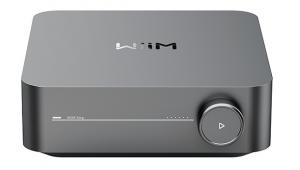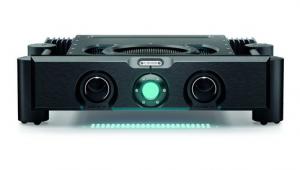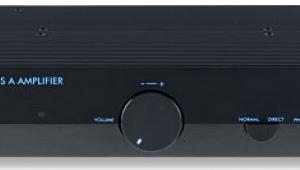Copland CTA407 Integrated Amplifier
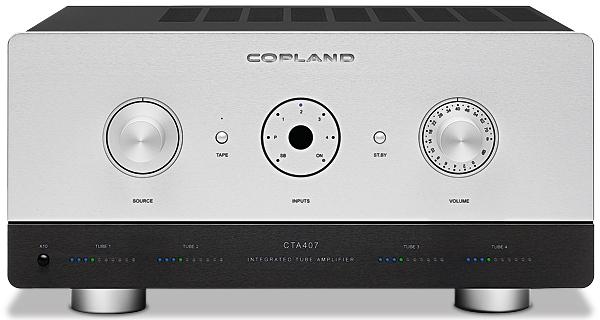
 With solid-state and tube/transistor hybrid models in its range, Copland returns to its roots with an all-analogue, all-valve integrated that supports aftermarket tube upgrades
With solid-state and tube/transistor hybrid models in its range, Copland returns to its roots with an all-analogue, all-valve integrated that supports aftermarket tube upgrades
By Copland's own reckoning, its noughties-era CTA405 integrated amplifier [HFN Aug '07] was an 'object of desire for audiophiles worldwide'. Now, some 16 years later, it has taken the idea of that model and considerably overhauled it – the £6500 CTA407 is both recognisably a descendant of the '405 and also markedly different.
How so? Well, the 40 LEDs along the front are a clue, as these give a visual indication of the operational status of the amplifier's quartet of power tubes. They're related to a new automatic tube biasing and diagnostic system – the CTA405 offered manual biasing only – and Copland says this platform, while compromising the simplicity of its typical approach, yields the CTA407 an impressive degree of flexibility.
Let's Roll
Successor model to the CTA405 it may be, but CTA407 buyers are perhaps more likely to compare it to the more recent, but now discontinued, CTA408 [HFN Apr '19]. That model was one of the first to employ KT150 power tubes, four combining for a rated output of 2x75W. Supplied here, however, are four Electro-Harmonix 6550s, resulting in a lower 2x50W figure. These can be swapped for any tube in the KT (Kinkless Tetrode) family, says Copland, making the CTA407 something of a tube roller's paradise.
However, the nominal output power does not increase with the beefier variants of these tubes. As chief designer Ole Møller explains, 'output power is primarily defined by the output transformer load impedance and the system supply voltage'. So, using a bigger tube like the KT150 will not give more power into 8ohm but will yield more current to support its output into lower, tougher loudspeaker loads.
The CTA407 is also unusual in employing high-bandwidth toroidal rather than conventional iron-core output transformers. This is an approach that has also been adopted in the past by the likes of Poland's Fezz Audio, but it's a first for the Danish company, and made possible by the auto bias system. Says Møller, 'The imprecision of manual push-pull bias adjustment can result in DC saturation of the core. With the introduction of ultra-precise auto bias calibration, the DC currents in the push-pull output transformer can now be perfectly cancelled'.
Available in a single black/silver two-tone finish, the CTA407 is all-analogue, with no digital connectivity/DAC stage onboard. Instead, it has generous connectivity on unbalanced RCA terminals – four line-level ins, a tape loop, and a phono stage input.
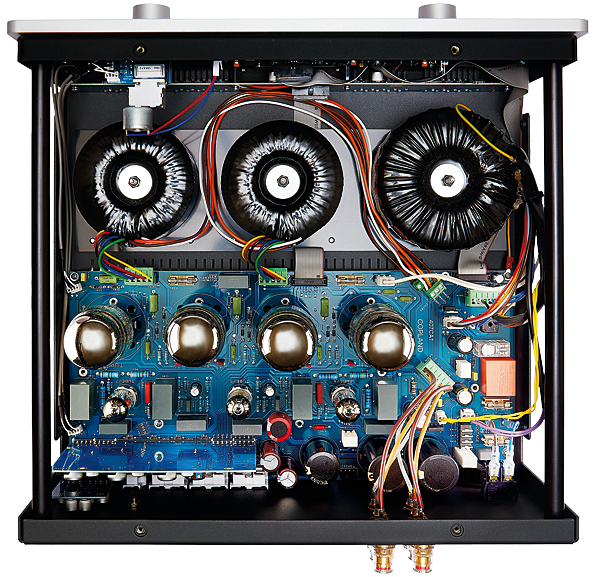
Pretty Hot
This last connection is designed for both MM and high-output (over 0.3mV) MC cartridges and operates with a fixed gain of 40dB. Meanwhile, speaker terminals are marked for both 4ohm and 8ohm loads.
Described as a 'compact solution', the CTA407 is only svelte when viewed against the chunkier CTA408 – it's a full-width design and some 420mm deep. Furthermore, because its tubes (the four 6550s, plus two 12BH7s and one ECC83 in the input/driver stage) are all enclosed within its ventilated chassis, it measures 215mm high front-to-back, and will need more space than that to deal with heat management. That said, it looks achingly pretty. The front panel will be familiar to brand fans as it has the symmetrical arrangement of controls, with a central nest of LEDs signifying the selected source, from earlier models. A dial on the left of the fascia handles input switching, while to the right can be found the volume control, which is motorised for use with the partnering RC-102A remote.
Back to those front-panel LEDs. After power on, the CTA407 takes around 30 seconds to 'boot up'. The LEDs will then illuminate, two blue ones showing the tubes are receiving a current, and then a third green one reporting the correct bias point has been reached. During music playback, depending on the demands put on the amplifier, six further orange LEDs may flicker on and off. A final red LED will come on when the maximum output has been reached and will stay on if the amp enters protection mode. I didn't 'see red' during my audition but did enjoy watching those orange LEDs sparking into life during dynamic music moments. Don't want to be distracted? A button on the front of the CTA407 turns all but the green LEDs off.
![]() Metal Guru
Metal Guru
I won't call the CTA407 the little engine that could, as it's not little, but the power on offer here, and the weight and drive brought to music, is impressive. This isn't a model destined solely for easy-to-drive, high-sensitivity speakers, and it combines its punch and scale of sound with believable tones, rich bass, and smooth highs that don't mask fine detail. The Copland CTA407's performance is as luxurious as its fascia is smart.

